
views
Using a Loofah
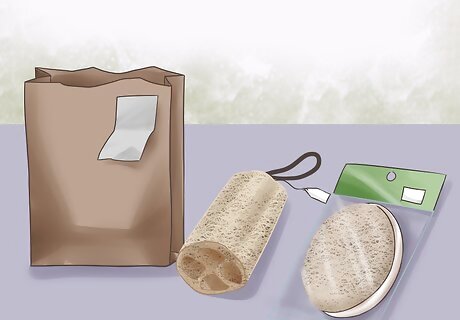
Obtain a loofah. Loofahs are usually the color of pale straw, with a slightly herbaceous scent. They come in many shapes and sizes, and are often sold as either cylinders or sliced discs. The texture of a loofah is rough when dry, but once you add hot water it becomes soft and supple. Loofahs are available at most stores that sell body care accessories, including drugstores. Loofahs are different from plastic bath poufs; the two items are used for the same purpose, but loofahs are made from a plant-based material and are said to be better for the skin.
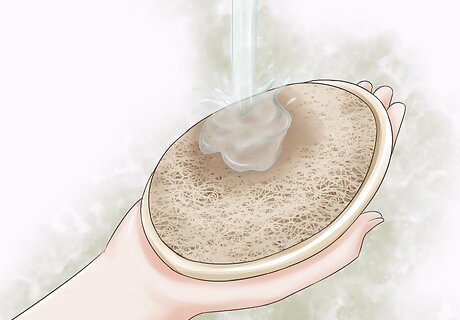
Wet the loofah in the shower or bath. Warmer water will cause the loofah to get softer more quickly. If you want the loofah to retain some texture and scrubbing ability, just wet it slightly before proceeding.
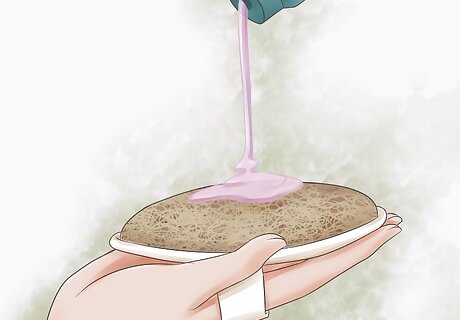
Apply soap to the loofah. Many people use body wash, which easily seeps into the surface of the loofah, but rubbing bar soap over its surface works as well. A little soap goes a long way; you only need a dime-sized amount or so.

Scrub your body with the loofah. Starting at your decolletage (the expanse of skin between your neck and chest), gently but firmly rub the loofah against your skin in circular motions. Work your way down to your ankles and then repeat along the back of the body. Don't forget to scrub your arms and hands as well. Care should be used around delicate areas such as underarms. If your skin is dry, rinse the soap out of the loofah before using it on your arms and legs. Additionally, you can use the loofah on the heels and soles of your feet. Be careful if standing in a slippery shower. The circular motion will help remove dead skin cells and is gentler on your skin than scrubbing up and down.
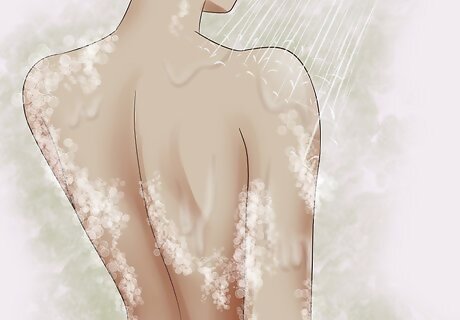
Rinse your body with cool water. This will close your pores and make you feel awake and refreshed. If trying to lull yourself to sleep with a shower or bath, use warm water instead.
Caring for a Loofah
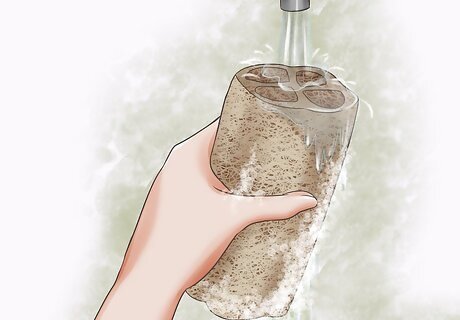
Rinse your loofah after each use. Use hot, clean water, making sure all the soap is gone. Soap left in the loofah could begin to smell. Properly prepare and care for your loofah. "I used to just grab my loofah and go — never drying it out or sanitizing it. After getting a rash, I realized I needed to follow the care steps here. Now, I make sure to thoroughly rinse, dry, and sanitize my loofah every week. No more rashes!" - Olakunle A. Exfoliate skin gently with circular motions. "I used to scrub up and down really aggressively with my loofah to try and get my skin smooth. But using more gentle circular motions, like the article suggests, has worked better. My skin feels exfoliated but not irritated." - Jelson E. Replace loofahs frequently for cleanliness. "I can't believe I used to use the same loofah for months! After learning they harbor bacteria, I now switch mine out for a new one every 2-3 weeks. It has really cut down on body acne." - Gaurav D. Use a loofah to get touchable, soft skin. "I love pampering myself with a loofah scrub in the shower. It leaves my skin feeling incredibly soft and smooth. My legs especially get very dry and flaky in winter, but regular loofah exfoliation keeps them touchably soft." - Marmar N. Did you know that wikiHow has collected over 365,000 reader stories since it started in 2005? We’d love to hear from you! Share your story here.
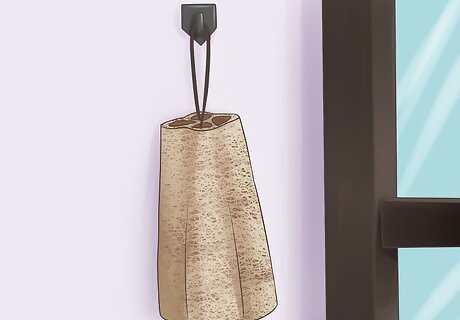
Dry the loofah completely between uses. Put it in a place with good circulation so it can dry completely. Drying it out will prevent bacteria from forming inside the loofah. Store your loofah on a hook outside of the shower. Placing it near a vent or fan can also help it dry out quickly. Since many bathrooms stay humid, you might want to dry the loofah in a different room.
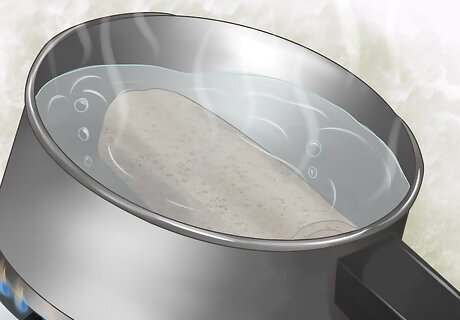
Sanitize the loofah once a week. You can run it through a hot wash cycle with your towels, run it through the dishwasher, microwave it for 30 seconds, or boil it in hot water for several minutes to kill any bacteria that might be growing. No matter what method you use, do it at least once a week to make sure the loofah stays healthy for use. Dermatologists have recently found that loofahs tend to harbor more bacteria than previously thought. That's why it's important to sanitize your loofah often. The same holds true for plastic bath poufs. Even though they aren't made from natural materials, they can still harbor bacteria.

Replace your loofah every three weeks. After this much time the loofah will be starting to fall apart from use and runs through the washer or boiling water. If you haven't been sanitizing your loofah, it's no longer safe for use after three weeks. Either way, time to get a new loofah. Many people have recently switched to using washcloths, since they're easier to run through the washer and they last much longer than loofahs. If you decide to stick with loofahs, make sure you dry them properly after each use and replace them frequently to keep your body healthy.




















Comments
0 comment